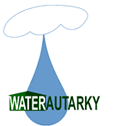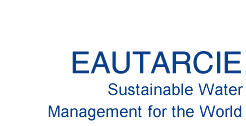
Estas páginas están en proceso de traducción por voluntarios, cuyas lenguas maternas no son el español.
Nuestro objetivo es ofrecer una información útil para el público hispanohablante. Para mejorar la calidad de esta información estamos buscando colaboradores voluntarios para corregir, o encargarse de la traducción de otras páginas. Los traductores siempre tienen la posibilidad de eligir lo que quieren traducir.
La propuesta de colaboración puede ser dirigida a Joseph Országh
El texto de esta página se publicó por primera vez en francés en www.eautarcie.com: en 2004
La adaptación hispana del texto original y primera publicación de este pagina sobre www.eautarcie.org: 2017-02-27
Actualización: 2017-03-06


El problema de la fitodepuración – o la depuración de aguas residuales con plantas
Water purification techniques using plants are generally favoured by environmentalists. Unfortunately, the bucolic view![]() of plants as THE water management solution hides a darker reality
of plants as THE water management solution hides a darker reality![]() .
.
Humus and Dejecta
At the base of all terrestrial life, we find humus. It is a brown organic substance of great complexity whose presence in the soil makes all the difference between fertile land and desert. Humus formation requires the combined simultaneous presence of nitrogen-rich animal biomass (raw animal manure, urine, human dejecta) and nitrogen-poor plant biomass (cellulose, lignin). Animal and human excreta are not waste that must be eliminated. They are part of the ecosystems that produce our food. As food comes from the earth, our excreta must inevitably return to the earth in form of stabilized humus to complete the natural cycle loop. This process does not occur when animal or human excreta are discharged in water: such shameful wastage becomes absolute, and irreversible. All excreta (animal or human) discharged in water remove precious organic nitrogenous matter from humus formation and produce, in fine, water pollution by nitrates. Water treatment / purification, even when using plants, destroys and even deconstructs nitrogenous organic matter contained in dejecta. The attempt to have plants absorb the inorganic nitrogen resulting form this deconstruction short-circuits an annual cycle in the forming of humus, and eliminates the essential animal component in the composting process. For further reading on the importance of humus, go to text on Ecological Sanitation page.
The Purification Efficiency of Plants
Fundamentally, in nature, aquatic and other plants do play an important role in the purification and filtering of surface waters. More precisely, the bacteria that attach to or live in symbiosis with plants' root systems are the ones that do most of the work. Plants absorb nitrates and phosphates from water. They can fix a whole series of pollutants, and even some heavy metals. Purification using plants is therefore a reproduction of a natural process, whereas it is used to treat our wastewater.
When considering domestic wastewater management from the viewpoint of an « environment-friendly» sanitation engineer, purification using plants appears like a panacea that eludes the problems of conventional sanitation systems. However, this (incorrect) view is based on the same principles that guide conventional treatment systems, just as they do for systems using plants: purify as best as can be done, without other considerations or concerns for the environment. In both cases, the initial criteria are the same: to assess the quantitative pollutant load with respect to a notion of inhabitant-equivalent [1], and to target purification efficiency.
An inhabitant-equivalent (or IH), defined here as the amount of substance released by one person, is legally defined (in Belgium) as representing 60 g/day of BOD5[ (biochemical oxygen demand) contained in 180 litres of wastewater. This value is the mean value measured in wastewater containing black water (dejecta) and grey water (soapy).
When a purification system with plants is used (just as with conventional treatment systems), pollution reduction at the source is left to users' discretion and good will.
Los problemas técnicos de la fitodepuración
La fitodepuración (con plantas) es, en cierto sentido, lo mismo que el tratamiento convencional de aguas residuales, especialmente para un observador que priorice el mínimo impacto ambiental sobre la máxima eficiencia de purificación. La diferencia principal es que el tratamiento convencional de aguas residuales genera menos pérdida de agua por evaporación, mientras que la fitodepuración produce menos lodos de depuradora.
Otra desventaja de estos sistemas es que ignoran las preocupaciones sobre la prevención de la contaminación en su fuente. Cuando se eliminan las aguas negras de la ecuación (es decir, cuando no se producen), la noción de habitante equivalente pierde el sentido (ver normas de descarga de aguas residuales). La prevención de la contaminación debe ser el objetivo principal de cualquier enfoque que busque cuidar el medio ambiente. La purificación de aguas residuales es una técnica correctiva (en lugar de preventiva). Los sistemas de fitodepuración se diseñan siempre como solución para tratar aguas residuales combinadas (negras y grises). Pero cuando no se utiliza un inodoro, la fitodepuración ya no es necesaria. En cambio el reciclaje de aguas grises en su jardín ofrece interesantes posibilidades.
Muchos ambientalistas que viven en los suburbios lamentan no tener suficiente espacio para instalar un sistema de fitodepuración como un estanque de estabilización de desechos o un sistema de lagunas. No se dan cuenta de que la simple supresión de los inodoros de descarga de su casa ofrece la posibilidad de implementar el tratamiento selectivo de aguas grises en un área relativamente pequeña de su jardín.
Un sistema de lagunas o el uso de sistemas de filtración plantados puede dar la ilusión de que las plantas acuáticas se hacen cargo del agua que ha sido contaminada por los excrementos. Esta afirmación, si bien parcialmente fundada, es en general incorrecta. La realidad científica es mucho más compleja. Esta sobrevaloración de la fitopurificación proviene del hecho de que se evalúa sobre la misma base que el saneamiento convencional, simplemente midiendo la « rendimiento del proceso de depuración » del sistema sin considerar otros impactos ambientales.
Other Environmental Impact
Phytopurified wastewater is essentially of the same quality as that which comes out of a conventional mechanical system (designed for nitrogen and phosphorus removal). It still contains too many nitrates and phosphates to be harmlessly dumped in a naturally clean river [3].
An efficient lagooning system still discharges about 10 milligrams of nitrogen (N) per litre into the receiving milieu. This is obviously little compared to the organic nitrogen that initially entered the system: the purification efficiency of the system is therefore good. Unfortunately, the discharge of even such a minimal amount of nitrogen (Remark: 10 mg of nitrogen N is equivalent to 44 mg of nitrate NO3-) in a river that has not suffered any domestic pollution (e.g. mountain streams in sensitive natural areas) generates an eutrophication process that can ultimately asphyxiate the stream. In such sensitive areas, a combined use of BLT’s (BioLitter Toilets) and selective greywater treatment (by infiltration into the ground) are the only ways of efficiently protecting water bodies. Therefore, purification of black water using plants is a lure.
Plants however present one advantage, with regards to the sludge produced. There is less of it, and it is of a better quality than that of conventional mechanical systems, since part of the pollution is absorbed by the plants.
Water loss due to evaporation is another factor. This is especially important in hotter and drier climate zones. In North Africa, the Middle East and southern Europe for example, such water loss can attain 60 and even 80% of the initial water entering a system. That is unfortunate, in areas where agricultural yields are directly proportional to the available water for irrigation. Regrettably, as soon as wastewater contains black water, irrigation of food crops becomes problematical, even after proper treatment. Sanitation risks remain.
To persist in using plants for wastewater purification instead of adopting separate treatments of black water and greywater is all the more regrettable, whereby for black water, composting eliminates all « faecal hazards » [4], and all greywater produced by the household can be reclaimed for agricultural/gardening purposes. In addition, soil improvement obtained from direct composting of our excreta greatly increases the water holding capacity of soil, thus reducing the need for irrigation, chemical fertilizers and pesticides.
…as well as pharmaceutical residues that are present in black water, causing grave concerns in rivers. When black water is composted, these residues are eliminated.
In this context, one can only be astounded to find lagooning systems in the middle of the desert, where above-mentioned water loss attains 80 %. Even their proponents acknowledge that the residual 20% of treated water is not altogether safe for agricultural reuse, due to the presence of intestinal parasites (helminths). Against all common sense, these systems are implemented in Africa (Sahara) by internationally renowned specialists [5].
Ref. Mr De Winter, Épuration des eaux à Dakar (or Wastewater purification in Dakar). Dimension 3 [a review by the Administration Générale du Coopération au Développement or General Administration of Development Cooperation, currently named DGCD], N° 5, October-November 1994. Before the launch of the phytopurification program, I presented an alternative solution (which was not accepted) that would involve the widespread use of dry toilets, composting of dejecta to be used to regenerate the soils in this desert region, and the use of greywater for irrigation. The results could have been: a 25% reduction in water consumption (in a region where every litre of water is « worth its weight in gold »), the possibility of using all wastewater for crop irrigation, and an increase in the soil’s water-holding capacity through the use of composted dejecta (thereby reducing water requirements for irrigation). Be that as it may, after the implementation of phytopurification systems, it was observed that 80% of the water was lost by evaporation, and that treated wastewater was unusable for subsistance agriculture due to the presence of intestinal parasitic eggs. Result: wastewater totally « wasted », biomass from dejecta totally lost, and soils depleted. These are the true impacts of phytopurification.
Even in temperate zones, the area occupied by a phytopurification system is enormous when compared to selective greywater treatment. Its installation cost and maintenance and operations costs are equally important. A set-up for a family of 5 will require about 100 m² of terrain with a very specific topography. On the other hand, the same family, adopting one of the selective greywater treatment techniques described in the first chapter, will need much less garden space. Installation costs will also be lower.
Maintenance of a lagooning treatment system requires annual cutting back of plants, their subsequent composting, regular removal and elimination of sludge deposit in the basins, plant replacement after 5 to 10 years. When replacing these (such as macrophytes), the system ceases to operate for many months, until the plants are mature.
In contrast, maintenance of the grey water treatment system is nil: you put it in place, and put it out of your mind. The main task is to regularly carry dry toilet effluent to the yard and add it to the compost bin. This work is minimal for those who already compost their garden wastes.
Para seguir leyendo, ir a la página El sistema TRAISELECT en el comercio.




